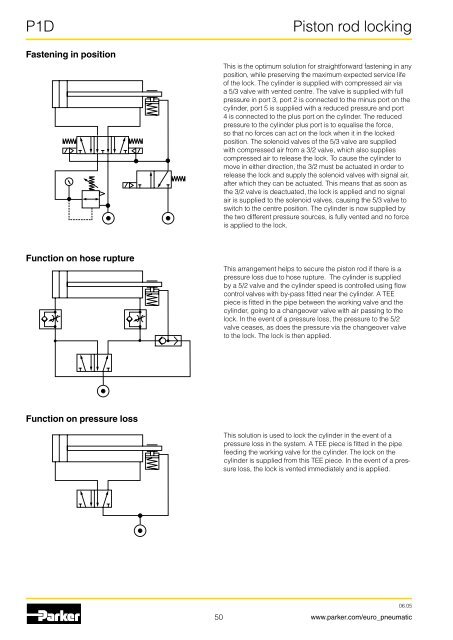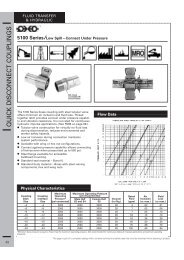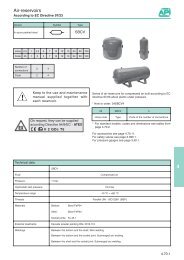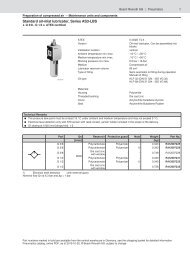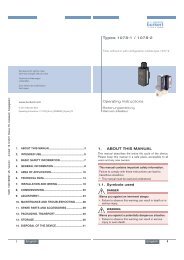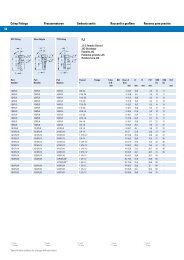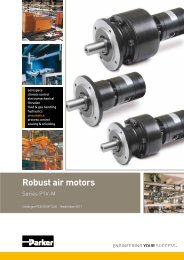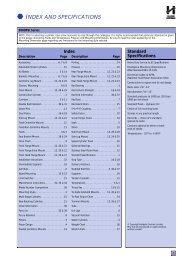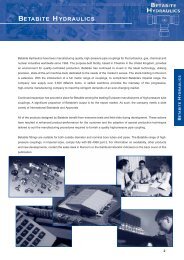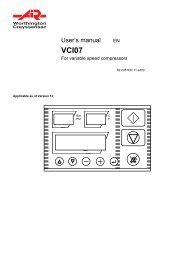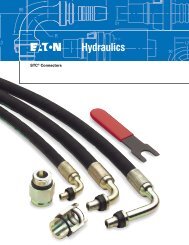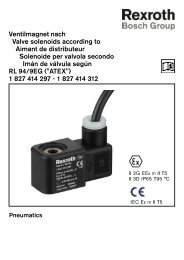Pneumatic cylinders - Duncan Rogers
Pneumatic cylinders - Duncan Rogers
Pneumatic cylinders - Duncan Rogers
- No tags were found...
Create successful ePaper yourself
Turn your PDF publications into a flip-book with our unique Google optimized e-Paper software.
P1DFastening in positionPiston rod lockingThis is the optimum solution for straightforward fastening in anyposition, while preserving the maximum expected service lifeof the lock. The cylinder is supplied with compressed air viaa 5/3 valve with vented centre. The valve is supplied with fullpressure in port 3, port 2 is connected to the minus port on thecylinder, port 5 is supplied with a reduced pressure and port4 is connected to the plus port on the cylinder. The reducedpressure to the cylinder plus port is to equalise the force,so that no forces can act on the lock when it in the lockedposition. The solenoid valves of the 5/3 valve are suppliedwith compressed air from a 3/2 valve, which also suppliescompressed air to release the lock. To cause the cylinder tomove in either direction, the 3/2 must be actuated in order torelease the lock and supply the solenoid valves with signal air,after which they can be actuated. This means that as soon asthe 3/2 valve is deactuated, the lock is applied and no signalair is supplied to the solenoid valves, causing the 5/3 valve toswitch to the centre position. The cylinder is now supplied bythe two different pressure sources, is fully vented and no forceis applied to the lock.Function on hose ruptureThis arrangement helps to secure the piston rod if there is apressure loss due to hose rupture. The cylinder is suppliedby a 5/2 valve and the cylinder speed is controlled using flowcontrol valves with by-pass fitted near the cylinder. A TEEpiece is fitted in the pipe between the working valve and thecylinder, going to a changeover valve with air passing to thelock. In the event of a pressure loss, the pressure to the 5/2valve ceases, as does the pressure via the changeover valveto the lock. The lock is then applied.Function on pressure lossThis solution is used to lock the cylinder in the event of apressure loss in the system. A TEE piece is fitted in the pipefeeding the working valve for the cylinder. The lock on thecylinder is supplied from this TEE piece. In the event of a pressureloss, the lock is vented immediately and is applied.5006.05www.parker.com/euro_pneumatic


